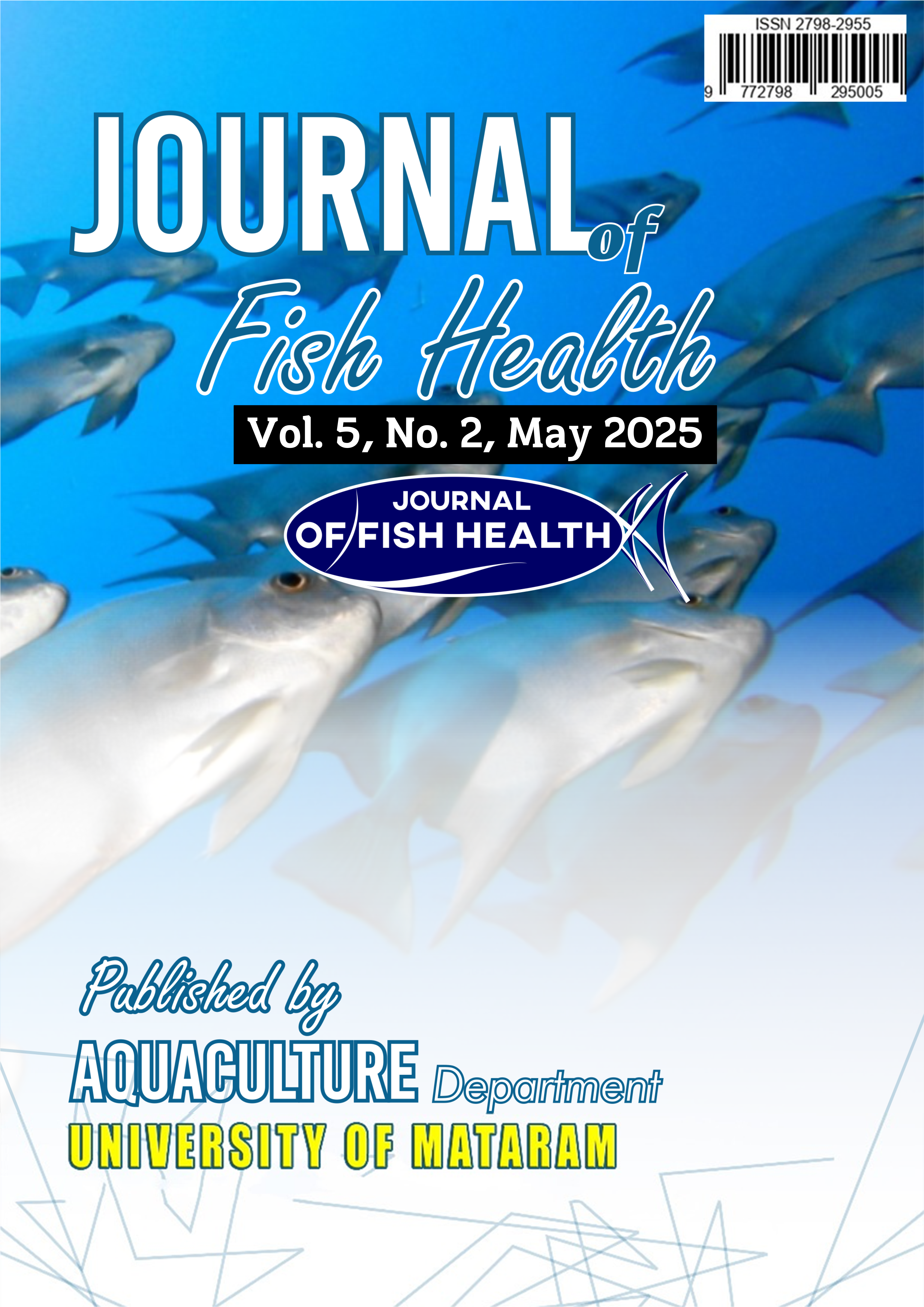The Effect of Different Salinity on Moulting of Mud Crab (Scylla serrata) in Controlled Media
DOI:
https://doi.org/10.29303/jfh.v5i2.7294Keywords:
Moulting, Mud Crab, SalinityAbstract
Mud crab (Scylla serrata) is a fishery commodity that has high economic value and has a wide salinity tolerance so that its growth can be developed. The growth of mud crabs can be influenced by genetic traits such as moulting. In cultivation activities there are methods that can accelerate the moulting process such as environmental engineering (increasing and decreasing the salinity of the maintenance media) and mutilation. This study aims to determine the growth and fastest moulting time of crabs in media with different salinities in controlled media. The method used is an experimental method with a Completely Randomized Design (CRD) consisting of 5 treatments and 3 replications, namely: (Control), (P1: 5 ppt), (P2: 10 ppt), (P3: 15 ppt) and (P4: 20 ppt) which are given to mud crabs for 45 days. The results showed that at 5 ppt salinity obtained the fastest moulting time which was 24.3 days and the longest was at 20 ppt salinity for 39 days, while the highest growth was obtained in the 15 ppt salinity treatment with an average absolute weight of 27.3 grams and the lowest was in the control treatment with an average absolute weight of 18.3 grams.
Downloads
Published
Issue
Section
License
1. The copyright of this journal belongs to the Editorial Board, based on the author's consent, while the moral rights of the publication belong to the author(s).
2. The formal legal aspect of journal accessibility refers to the same Creative Common Attribution + Noncommercial + ShareAlike (CC BY-NC-SA), implying that publication can be used for non-commercial purposes in its original form.
3. Every publication (printed/electronic) is open access for educational, research and library purposes. In addition to the objectives stated above, the editorial board is not responsible for copyright infringement















